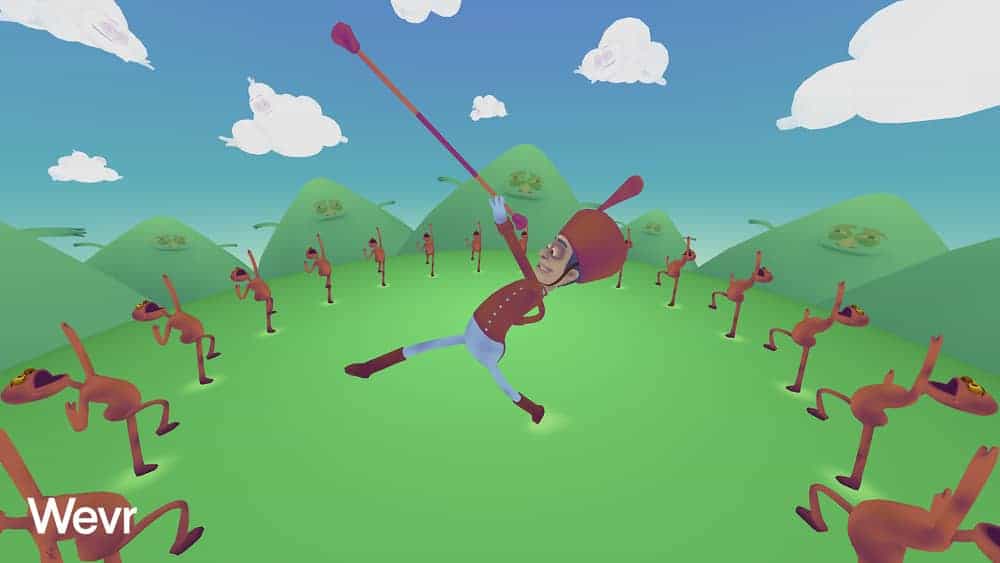A talk on the final day of the Google I/O conference on VR and cinema highlighted the challenges we face in developing virtual reality as a new medium of storytelling.
Over the past year, investments have poured into VR headsets as we venture into the second generation of Oculus, HTC Vive, and Google’s new headset. It’s time to pay closer attention to the production of content.
Ultimately, good quality content that we can return to again and again is critical for the success of VR. As Chris Milk reminded us recently:
Nobody would buy a TV if the content for it only lasted a week.
Both Oculus and HTC Vive have opened their own stores with content and games. One of the best VR content repositories has been The New York Times NYT VR app, which works with both Android and iOS phones and requires only a Cardboard viewer. But the most interesting and experimental work we see is from filmmakers and digital artists at film festivals like Sundance, Tribeca, and SXSW.
The challenge with the film festivals is that they draw upon a select crowd, not the broader public. Google’s announcement that the DayDream platform will house VR content from entertainment, news media, and game providers may broaden the public’s access. The sessions at I/O revealed that it will be incredibly easy to create VR content on Daydream.
But the main question remains: what makes a good VR experience? Right now, filmmakers and producers playing in a vast open space without guidelines or established practices.
A New Medium
Using 360 environments rather than rectangular frames, we are witnessing the birth of a new medium. To put this into perspective, look back into the history of cinema. By the early 1900s the necessary foundations of cinema were taking shape. Film cameras, innovative shooting techniques, editing, and projectors were all in use. But the storytelling language of movies took another 30 years to mature. And it would continue to change in the latter half of the 20th century.
With VR cinema, we are at the beginning stages of experimentation, exploring and discovering new storytelling techniques on the go. Until we figure it out, there are no experts. VR creators will borrow from every medium. And they will work at the intersection of movies, theater, documentaries, animation, art, and games.
VR and Cinema at Google I/O
At Google I/O, Jessica Brillhart presented a session titled VR and Cinema, sharing her experience of filming in VR over the past year. Here’s the description from the schedule:
Filmmakers breaking into virtual reality face an entirely new set of challenges; creating for a new medium requires a new perspective. Join Google’s Principal Filmmaker for VR, Jessica Brillhart, as she explores the emerging landscape and language of cinematic VR – providing some of her own insights from being a creator in this field while highlighting experiences produced by the world’s most prolific VR content creators.
Jessica uses Google’s Jump rig of 16 GoPros. She framed her talk around the following areas:
The Frame Disappears
The first part of her talk focused on the disappearance of the frame. In traditional film, the frame keeps the viewer focused. In Virtual Reality, the entire scene is accessible to the viewer; in traditional cinema, the scene would focus on the climber.

The Viewer’s Freedom
In the scene above, the climber is potentially a point of interest. It’s effective as the barren landscape draws the viewers toward the center. But VR filmmakers must recognize that viewers will go wherever they want. One of the most effective ways of assessing the immediate impact of one’s work in VR is to watch someone in the experience. No matter what you try to do as a filmmaker, some people in the experience will “wander off” in another direction.
Creating New Worlds
Conventional frame-to-frame editing does not work in VR; instead, we need to think about it as world-to-world. As Jessica Brillhart puts it, rather than
preciously craft something that someone may never look at . . . instead guide visitors through a crafted universe.
Treat the Camera as a Person
In VR, the camera becomes the head and the eyes of the visitor. Move the camera and you are, in effect, moving the person who is wearing the headset in the experience. That movement can work both ways. Done abruptly without apparent purpose, you’ll confuse the viewer and possibly give them motion-sickness. Done right, you may set up a moment of eye-contact that may bring a unique and intimate experience.

Jessica Brillhart highlights the effective use of open space in The Blue, one of our favorite experiences on the HTC Vive. Visitors are able to discover things on their own in this underwater environment. Even though there is a definitive – and striking – conclusion to the experience, each experience remains unique. Always plan for open space and time for exploration, even if it seems counter to the ultimate point of interest you want to convey. The area behind someone may hold as much significance as the space in front of them.

Another example, the VR experience Old Friend a the Tribeca Film Festival was referenced as an illustration of the possibility of movement within VR and the use of the controllers. Old Friend reminds you of a music video where you dance to the tunes along with the band.
The Future of VR and Cinema
In her conclusion, Jessica Brillhart talked about the ancient notion of stories as a way for us to be transported to another place. In VR, the most powerful feeling is a sense of presence. We can now inhabit the stories we encounter. And while we still need to discover the language to engage with this new medium fully, it is no longer about a single story or the one envisioned by the director.
Perhaps the best way to think of the future of Virtual Reality is that in VR, the visitor is also the storyteller. As Jessica Brillhart concludes, VR creators are builders of worlds, creating the space for the viewers to become the storytellers of their own experiences.
Maya Georgieva is an EdTech and XR strategist, futurist and speaker with more than 15 years of experience in higher education and global education policy. Her most recent work focuses on innovation, VR/AR and Immersive storytelling, design and digital strategy. Maya actively writes and speaks on the topics of innovation, immersive storytelling and the future of education and consults organizations and startups in this space.


The talk keeps going on how little content there is. Well, I am one of the dozens of ignored VR filmmakers who see their work neglected by the “large” players, Google, Oculus, etc. despite the fact that many, like me, have crafted Narratives using the Oculus SDK2, not even the production model. You have no content because you choose not to have it. We’re making, and will continue to do so despite your ignoring us.
I’d be interested in knowing more. This is important if content producers like you are doing projects which get ignored by the major players. Are you all submitted work that is getting rejected or is there just no submission process available? Thanks for your comment – this needs to be heard.